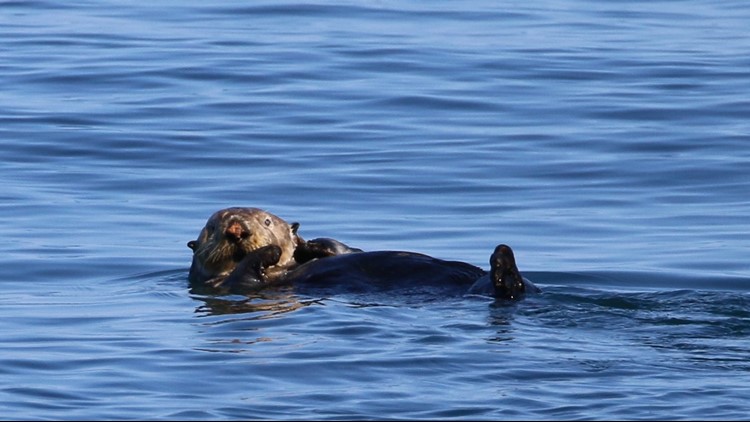Local mammal enthusiasts are celebrating after an increased number of sea otters have been spotted in the Puget Sound region.
Island Adventures Whale Watching naturalist McKenna Hanson took a picture of a female sea otter near the mouth of the Elwha River Sunday afternoon. This is believed to be the third confirmed sea otter in the Salish Sea this year.
Sea otters spend most of their time at sea and can be found floating on their backs sleeping or snacking on shellflish.
The U.S. Fish and Wildlife Service claims that the number of sea otters on the Pacific coast once numbered as many as 300,000. Between 1740 and 1900, sea otters were nearly driven to extinction due to trapping. Since they have nearly 1 million hairs per square inch, their pelts were sought after during this period.
By 1900 the commercial harvest of sea otters ended, only because their numbers had dwindled so low that it was nearly impossible to find them. The hunting of sea otters was officially banned after the 1911 International Fur Treaty was signed and enacted.
There are an estimated 1,000 sea otters in Washington; the population increase is due to conservation efforts in the state.
These sea otters are typically seen along the outer coast near Destruction Island and Cape Flattery. Lately a few individual sea otters have been spotted exploring inland waters in the Puget Sound.
Last month, an otter with an injured left eye had been spotted near the southern end of San Juan Island. After several people spotted the otter on multiple occasions, naturalist Sara Hysong-Shimazu of Maya's Legacy Whale Watching nicknamed the otter "Odin" after the Norse god who sacrificed his eye in exchange for wisdom.
Another sea otter nicknamed "Ollie" hangs out near Race Rocks Ecological reserve, a protected area near Victoria, B.C. Ollie has a Facebook page where updates and pictures are shared.
It is too early to determine why sea otters are beginning to return to the Washington coast, but their presence in local waters is welcomed and encouraged.



